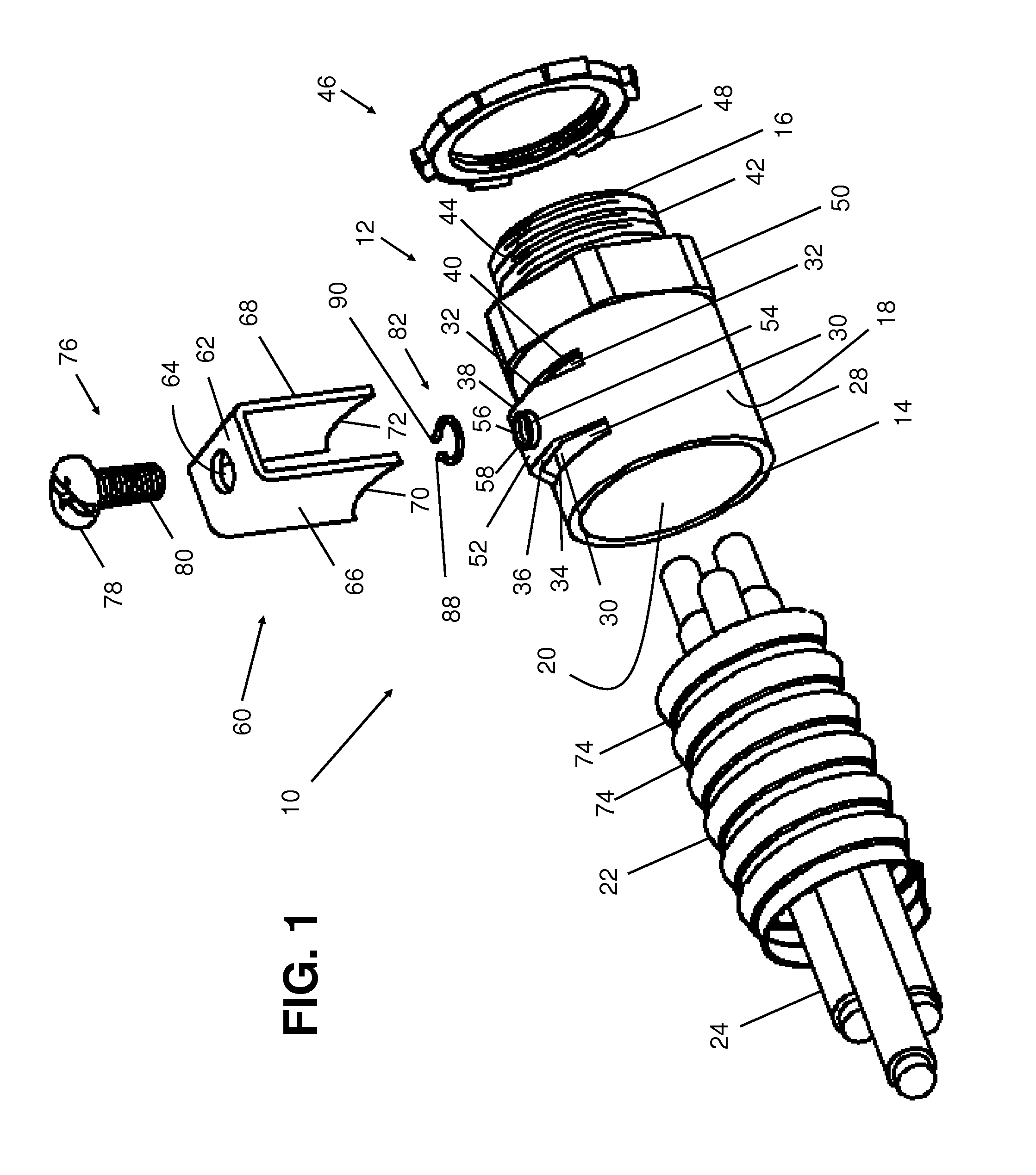Electrical conduit connector with two-point engagement
a technology of electrical conduit and connector body, which is applied in the direction of coupling, coupling device connection, transportation and packaging, etc., can solve the problems of devices taking space within the connector body, conduit or cable may not be held firmly in place, and the use of conduit or cable within the connector body often does not provide a good grasp
- Summary
- Abstract
- Description
- Claims
- Application Information
AI Technical Summary
Benefits of technology
Problems solved by technology
Method used
Image
Examples
Embodiment Construction
[0017]Continuing the discussion of the Summary section above, FIG. 2 depicts a cut-away side view of the exemplary connector assembly 10 of FIG. 1. The elongated body 12 is shown with the conduit 22 inserted through the internal passage 20. The inner diameter of the body first region 28 and the outer diameter of the conduit 22 are greater than the inner diameter of the body second region 42. This provides a barrier to the further insertion of the conduit 22 into the body second region 42, but allows the cable 24 within the conduit 22 to extend into the body second region 42 (not shown). Also, the diameters of the body first region 28, the body middle region 50, the body second region 42, and the conduit 22 can be adjusted as desired. Moreover, the diameters of the components need not be changed in stepwise fashion, and may increase or decrease gradually along the length of the body 12.
[0018]The conduit 22 is threaded, with conduit grooves 74 along its length, allowing the conduit 22...
PUM
 Login to View More
Login to View More Abstract
Description
Claims
Application Information
 Login to View More
Login to View More - R&D
- Intellectual Property
- Life Sciences
- Materials
- Tech Scout
- Unparalleled Data Quality
- Higher Quality Content
- 60% Fewer Hallucinations
Browse by: Latest US Patents, China's latest patents, Technical Efficacy Thesaurus, Application Domain, Technology Topic, Popular Technical Reports.
© 2025 PatSnap. All rights reserved.Legal|Privacy policy|Modern Slavery Act Transparency Statement|Sitemap|About US| Contact US: help@patsnap.com



